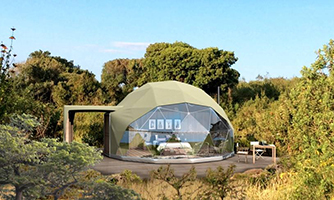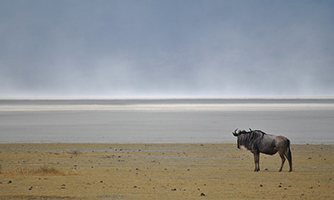Welcome to Ngorongoro Crater Tanzania
Ngorongoro Crater in Tanzania is located in the Ngorongoro Conservation Area which spans across vast expanses of highland plains, savanna woodlands and forests. Established in 1959 as a multiple land use area, with wildlife coexisting with semi-nomadic Maasai pastoralists practicing traditional livestock grazing, it includes the spectacular Ngorongoro Crater, the world’s largest caldera. The property has global importance for biodiversity conservation due to the presence of globally threatened species, the density of wildlife inhabiting the area, and the annual migration of wildebeest, zebra, gazelles and other animals into the northern plains. Extensive archaeological research has also yielded a long sequence of evidence of human evolution and human-environment dynamics, including early hominid footprints dating back 3.6 million years.
The Ngorongoro Conservation Area (809,440 ha) spans across vast expanses of highland plains, savanna, savanna woodlands and forests, from the plains of the Serengeti National Park in the north-west, to the eastern arm of the Great Rift Valley. The area was established in 1959 as a multiple land use area, with wildlife coexisting with semi-nomadic Maasai pastoralists practising traditional livestock grazing. It includes the spectacular Ngorongoro Crater, the world’s largest caldera, and Olduvai Gorge, a 14km long deep ravine. The property has global importance for biodiversity conservation in view of the presence of globally threatened species such as the black Rhino, the density of wildlife inhabiting the Ngorongoro Crater and surrounding areas throughout the year, and the annual migration of wildebeest, zebra, Thompson’s and Grant’s gazelles and other ungulates into the northern plains.
Discover Ngorongoro Crater
Location

Ngorongoro Crater is located in the northern part of Tanzania on the Eastern Great Rift Valley arm. The park which is managed by the Ngorongoro Conservation Area Authority is located in the villages of Oloirobi district which has continued to develop due to the possession of the national park. Park fees collected in ngorongoro are always taken back to develop its surrounding communities which include the villages of Oloirobi which have seen developments in terms of infrastructure and well being including schools, hospitals and water-electricity developments.
Best time to visit Ngorongoro Crater

Ngorongoro Crater has a wide variety of species and wildlife and is open for visiting all year round. However there are seasons which are very interesting for tourists to visit. During the wet seasons animals be less in the park as they hide for shelter and the roads are usually slipper and impassable. Therefore most of the travelers opt for the months of June to September and December to February which are usually dry months. Animals species like lions, cheetahs, elephants, buffaloes and the like all come out in big numbers in search for water. Also the roads are easy to navigate during these months. Therefore these months are the best time for tourists to visit Ngorongoro conservation area.
Activities & Attractions
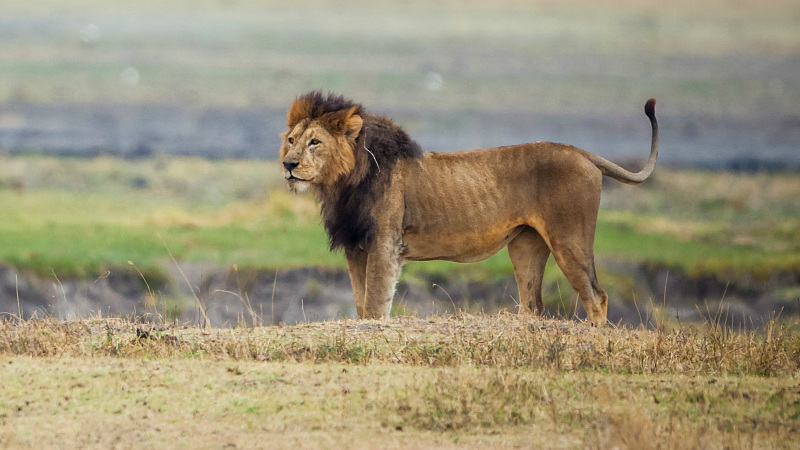
Due to the large number of wildlife species and other attractions in Ngorongoro, there are a number of activities that tourists can engage in when they visit. Because of these attractions and activities, tanzania has been sold to the world and is very famous for having Ngorongoro Crater as a conservation area. Some of the attractions include the Wildlife species and ngorongoro conservation area happens to be one of the only places in the world where you will find all the Big 5 mammals of Africa i.e. Buffalos, Lions, Elephants, Leopards and the Rhinos. The most famous activity for viewing the wildlife is the Wildlife. Other attractions in Ngorongoro include bird species, the amazing caldera of Ngorongoro Crater, Gold Mountains, a visit to the Olduvai Museum and footprints at the Laetoli.
Safaris to Ngorongoro Crater

Ngorongoro Crater in Tanzania has got a number of attractions which have continuously brought to deck, a number of tourists who travel from across the world. They usually come to this place for holidays and most of them on honeymoon safaris. From this, a number of safari companies have come up to take advantage of these trips that foreigners do throughout the year. These tour companies all strive to offer the right safari packages for the foreigners. Therefore it is up to the traveler to make a choice with which safaris package to choose. A safari package is sort of a detail on how the trip shall flow right from the start when they pick you from the airport or from your accommodation facility, to when the safari ends when you are flagged off. Therefore it is up to the traveler to make a choice with which safaris package to choose.
Accommodation
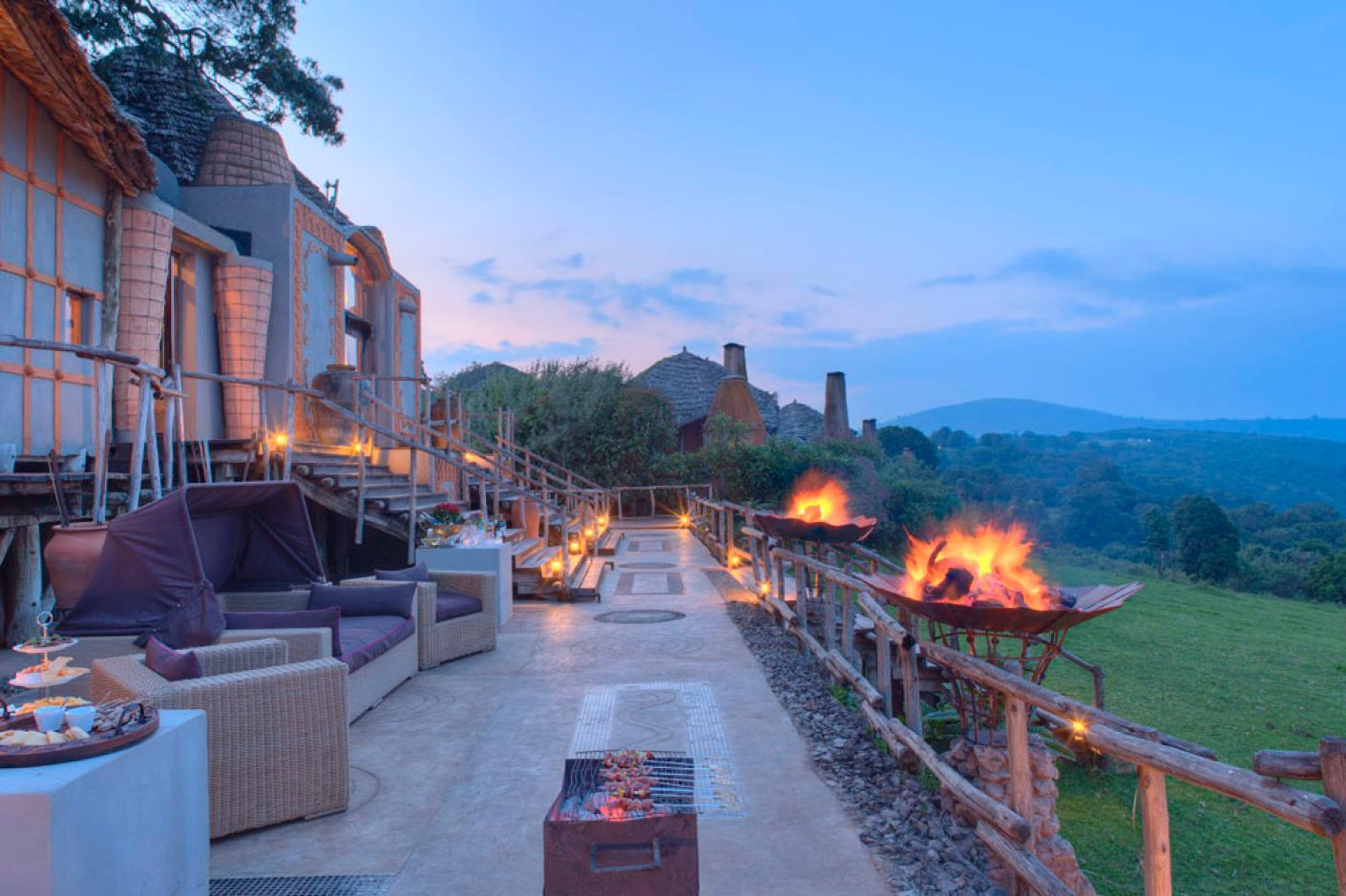
Being a national reserve and the fact that Ngorongoro Conservation Area receives a large number of tourists from across the world throughout the year, many companies have come up to build different structures that shall fit in to accommodate different clients who are on Safari. Ngorongoro has a number of lodges and hotels around the park with the best facing the caldera crater lake of Ngorongoro to offer great views and to put up the competition. These give a wonderful view of the crater lake as a number of wildlife graze around these accommodation facilities. These allow travelers to come up close with the wildlife and interact with them. At some point you might wake up to giraffes or elephants at your doorstep and this amazing interaction with nature will leave you fascinated about Ngorongoro Crater in Tanzania.
Some of the accommodation facilities that are entailed in the package to Ngorongoro crater in tanzania include Ngorongoro Wildlife Lodge, Ngorongoro Crater Lodge, Ngorongoro Sopa Lodge among many others. All these lodges are categorised into budget lodges, midrange lodges and luxury lodges. So it is all up to the traveler to be able to pay for the facilities they would like to have.
Tour Operators
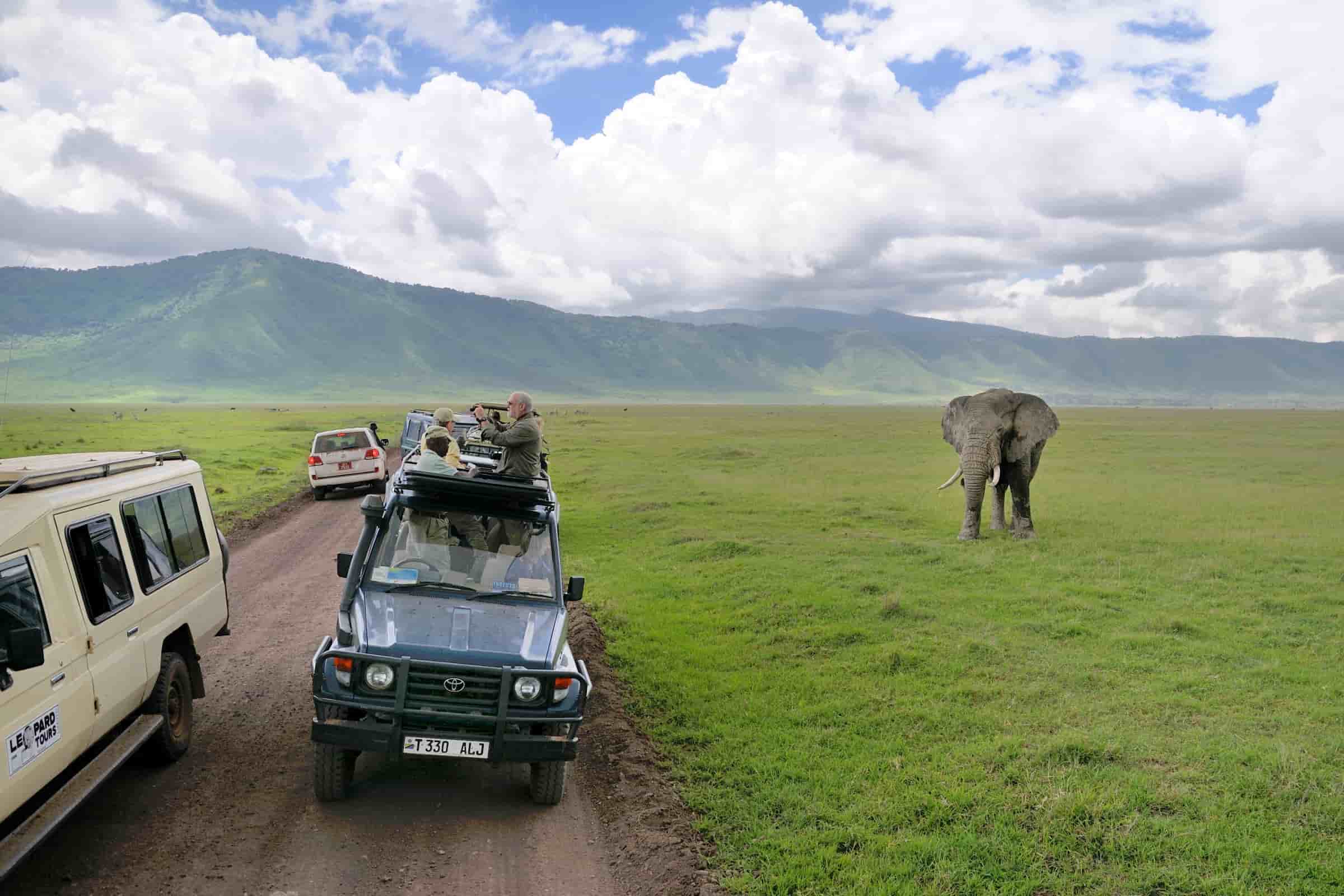
Tour operators are the companies which help you to be able to come up with a detailed safari package that entails activities and costs of the whole trip. Tour companies will also help you to organise your transportation throughout the safari and will also be able to book the accommodation facilities for you. These tour operators help ease your safaris and only leave you with the task of making the payment for what you would like to have and experience. All payments on trip are made by the tour operators including meals, car fueling, accommodation fees, park entry fees, and all other fees required. With all this information about these tour companies, you are highly advised to book your safaris to Ngorongoro with a trusted tour operator and you should book in time to avoid disappointments.
THE NGORONGORO CONSERVATIONAL AREA’S HISTORY
This area was discovered in the late 1800s by the Austrian explorer Oscar Baumann, and it has been exploited in various ways since then until the British established the Serengeti National Park in 1951, which included what is now theNgorongoro Conservation Area, protecting it from over-exploitation and poaching. The Ngorongoro Conservation Area was officially established in 1959, significantly altering the use of this land, which had previously been regarded not only as a place where nature, specifically flora and fauna, is protected, but also as a place where indigenous people’s rights are protected, albeit with some restrictions in order to maintain ecosystem balance.
The main objectives of establishing the Ngorongoro conservational area were /are essentially three: promoting natural resource conservation, protecting native interests, and, last but not least, encouraging ecotourism. All of this is intended to be achieved in accordance with the needs of all, without negative consequences, a balance that was difficult to establish and maintain but without which it would have been impossible to continue. The Ngorongoro Conservation Area was designated as a World Heritage Site in 1979 and was added to the list of UNESCO Biosphere Reserves in 1980.
The Ngorongoro Conservation Area is a one-of-a-kind protected area in Africa due to its varied land use policy. The area’s natural and cultural resources are among the reasons that UNESCO designated it as a World Heritage Site in 1979 and an International Biosphere Reserve in 1981. Ngorongoro Conservation Area was included in the list of mixed world heritage sites by UNESCO in 2010. Tanzania has been the capital of Africa’s New Seven Natural Wonders since 2013, thanks to the Ngorongoro Conservation Area, Kilimanjaro (Africa’s highest summit), and Serengeti National Park.
The Ngorongoro Conservation Area received another UNESCO accreditation in 2018: it is part of the Ngorongoro-Lengai UNESCO Global Geopark in Northern Tanzania. Global Geopark, according to UNESCO, are single, undivided geographical areas where internationally significant monuments and landscapes are administered with a holistic idea of protection, education, and sustainable development.
The Ngorongoro Lengai Geopark now has 117 attractions. The Ngorongoro Crater, Lake Natron, Mount Oldonyo Lengai, Empakai Crater, Grimezk Grave, Rim Forest, Malanja Depression, Serengeti Plains, Olduvai Gorges, Leakey Camp, Soitoo Quartzite Hills, shifting sand, Bao Site, Nasera Rock, An’gatakiti Hills, Olkarien Gorge, Natural Stone Bridge, Ruppell’s Vulture, Accacia Rim Site, Gol Mountain, Lake Eyasi, Sacred Tree etc.
WILDLIFE IN NGORONGORO CONSERVATIONAL AREA
The Ngorongoro Conservation Area is home to 115 different animal species. Apart from the crater, the short-grass plains west of the Gol Mountains, northwest of Ngorongoro Crater, and the surroundings of Lake Ndutu near the Serengeti National Park border are the two main sites for game viewing. During the wet season, the two sites become grazing and breeding places for roughly 2 million animals, as they sustain the Serengeti ecosystem’s annual wildebeest migration. From December to May (depending on precipitation), over one million wildebeests and thousands of zebras and gazelles migrate south to calve in the short-grass plains surrounding Ndutu, which straddle the Conservation Area and Serengeti National Park from December to May.
The crater’s occupants include elephants, elands, hartebeests, and endangered rhinos. In the crater, there are also resident zebras and wildebeests who do not participate in the annual migration. Hippos can be found in the crater’s permanent fresh water ponds and wetlands. Buffalos, waterbucks, warthogs, kudus, and other antelope species are among the non-migratory herbivorous mammals present in the Conservation Area. Giraffes can be seen in the vicinity of Lake Ndutu, where acacia trees abound.
Lions, cheetahs, hyenas, leopards, jackals, serval cats, and endangered wild hunting dogs are among the carnivores present in the Ngorongoro Conservation Area. The Conservation Area is home to about 550 bird species, some of which are resident and others of which are migratory. Thousands of lesser flamingos and other water birds frequent Lake Magadi a salt lake on the crater’s floor. These birds can also be seen in the Empakai Crater Lake and around Lake Ndutu. Ngorongoro’s woods are also teeming with birds, including turaco and hornbill species. The Conservation Area’s plains are home to raptors like the goshawk and harrier.
LOCATION OF NGORONGORO CONSERVATIONAL AREA
The Ngorongoro Conservation Area is a protected area and a World Heritage Site in northern Tanzania, 180 kilometers (110 miles) west of Arusha in the Crater Highlands. It is part of the Serengeti environment, and Maasai tribes can often be seen living among the rich wildlife. It’s a great place to watch wildebeest as they migrate through the area each year. Also, the Ngorongoro Conservation Area is close to other well-known national parks in Tanzania, such as Lake Manyara National Park, which is home to tree-climbing lions, and Tarangire National Park, which is home to Tanzania’s largest herd of elephants.
WHY VISIT THE NGORONGORO CONSERVATION AREA?
The Ngorongoro Conservation Area is part of the Serengeti ecosystem, with over 25,000 animals and hundreds of bird species coexisting with the semi-nomadic Maasai people. It’s no surprise that it’s one of Tanzania’s must-see safari destination.
The Ngorongoro Crater is famous for being the world’s only complete caldera. A wildlife refuge thrives in its basin, where the volcanic soil has fertilized the ground, attracting a diverse range of wildlife, from lions and leopards to elephants and hippos. Visitors can go on a safari across the crater and into the Ndutu lake area to the west of the crater, which is famed for its abundant wildlife and the yearly Great Migration that passes through there.
Apart from the game drive to the Ngorongoro crater, Empakai and Olmoti two smaller craters, can be visited on foot with Maasai guides. Visitors can follow in the footsteps of early man in the Olduvai Gorge, where a 1.75-million-year-old human head and a set of fossilized footprints were unearthed.
The Ngorongoro Conservation Area offers a wide range of activities, from safaris in the Ngorongoro Crater to seeing the Great Migration from Ndutu Lake to trekking through the beautiful Olduvai Gorge.
WEATHER AND CLIMATIC CONDITIONS IN THE NGORONGORO CONSERVATION AREA
Despite the fact that Ngorongoro and the Crater Highlands are less than 200km south of the equator, the high elevation (usually above 2,000m) means the climate is unexpectedly chilly, rarely exceeding 25°C during the day and frequently falling below 10°C at night. The weather is normally sunny during the day, but cloudy days are not uncommon, and the difference in altitude between the crater floor and the rim causes a substantial build-up of mist in the early mornings.
Because of Ngorongoro’s equatorial position, typical minimum and maximum temperatures have little seasonal change, albeit the months of October to March are a few degrees warmer than the months of May to August. Rainfall is much more seasonal, as it is linked to the moist trade winds that blow inland from the Indian Ocean from November to May. More than 80% of the annual precipitation of 1,000 mm falls during these months. The wettest/rainiest months are March and April while the dry months are from June to September
Despite this, you may visit Ngorongoro at any time of year, and there are many more compelling aspects to consider than the weather when planning your trip. Because the crater may become rather congested with safari vehicles during peak seasons, travelers looking for a less crowded experience should aim for April and May, which are the quietest months for tourism, not only in Ngorongoro but throughout the northern Tanzania safari circuit.
VEGETATION IN NGORONGORO CONSERVATIONAL AREA
 The Ngorongoro is home to both lush green, rain-fed vegetation and arid species. Uncultivated lowland vegetation, arid and semi-arid plant communities, abundant short grass for grazing, and highland forests can all be found in the area.
The Ngorongoro is home to both lush green, rain-fed vegetation and arid species. Uncultivated lowland vegetation, arid and semi-arid plant communities, abundant short grass for grazing, and highland forests can all be found in the area.
The steep slopes of the crater are covered in scrub heath, grasslands, high open moorland, and the remnants of dense evergreen forests, while highland trees such as Peacock Flower, Yellow-Wood, Kousso (Hagenia abyssinica), and Sweet Olive can also be found. On Oldeani Mountain, there are also lengths of pure bamboo, as well as pencil cedar on Makarut Mountain to the west. Lower slopes are dominated by doveweeds, while upland forests contain Red Thorn Acacia and Gum Acacia, which are important for watershed protection.
Open short-grass plains with fresh and brackish water lakes, marshes, swamps, and two areas of acacia woodland cover the crater basin. The acacia, or Yellow Fever tree, grows in the Lerai Forest, whereas Pillar Wood and Acacia Lahai grow in the Laiyanai Forest. The grass-covered plains to the west are punctuated by Umbrella Acacia and Commiphora Africana trees. In the drier areas of Lake Eyasi, blackthorn acacia and zebra wood predominate.
TOURISM ATTRACTIONS AND ACTIVITIES IN THE NGORONGORO CONSERVATION AREA
Hundreds of Thousands of travelers visit Tanzania each year to see the Ngorongoro Conservation Area. It’s one of the greatest sites in Africa to see all five of the continent’s most famous mammals: lions, rhinoceroses, leopards, elephants, and buffaloes.
The Ngorongoro crater is the biggest/major/key attraction in the Ngorongoro conservational area, and it is no surprise that it is the reason for the conservation area’s fame. The Ngorongoro Crater is one of Africa’s most iconic sights, with the highest concentration of wild species on the continent. The Crater, sometimes referred to as the “eighth wonder of the world,” has gained international acclaim, attracting an ever-increasing number of visitors each year. You won’t be able to get away from other vehicles here, but you’ll be rewarded with incredible wildlife viewing in a truly breathtaking setting.
The world’s biggest intact volcanic caldera, the Ngorongoro Crater, is located in Tanzania-Ngorongoro near Serengeti national park. It is home to over 30,000 creatures at any given time. The rim of the crater is about 2,200 meters high and has its own climate. The small outlines of animals making their way around the crater floor far below can be seen from this elevated vantage point. Most days of the year, swaths of clouds hang about the rocky rim, and it’s one of the few spots in Tanzania where it may feel chilly at night.
Apart from the main attraction-the Ngorongoro Crater, other attractions in the Ngorongoro conservational area include Lake Magadi, Olduvai Gorge, Laetoli, Lerai Fever Tree Forest, Shifting Sands, Gol Mountains, Nasera Rock, Salei Plains, and Ol Karien Gorge, Hadzabe Tribe, maasai bomas, Ol Doinyo Lengai, and Lake Natron, Empakaai Crater, Olmoti Crater etc.
Being one of the tourism top safari destination in Tanzania and Africa, also by having the larger concentration of attractions the Ngorongoro conservational area has many of things to do to enjoy your vocation in your safari to Africa-tanzania. Some of the tourism activities in the Ngorongoro conservational area/ crater includes
Game drives and wildlife viewing
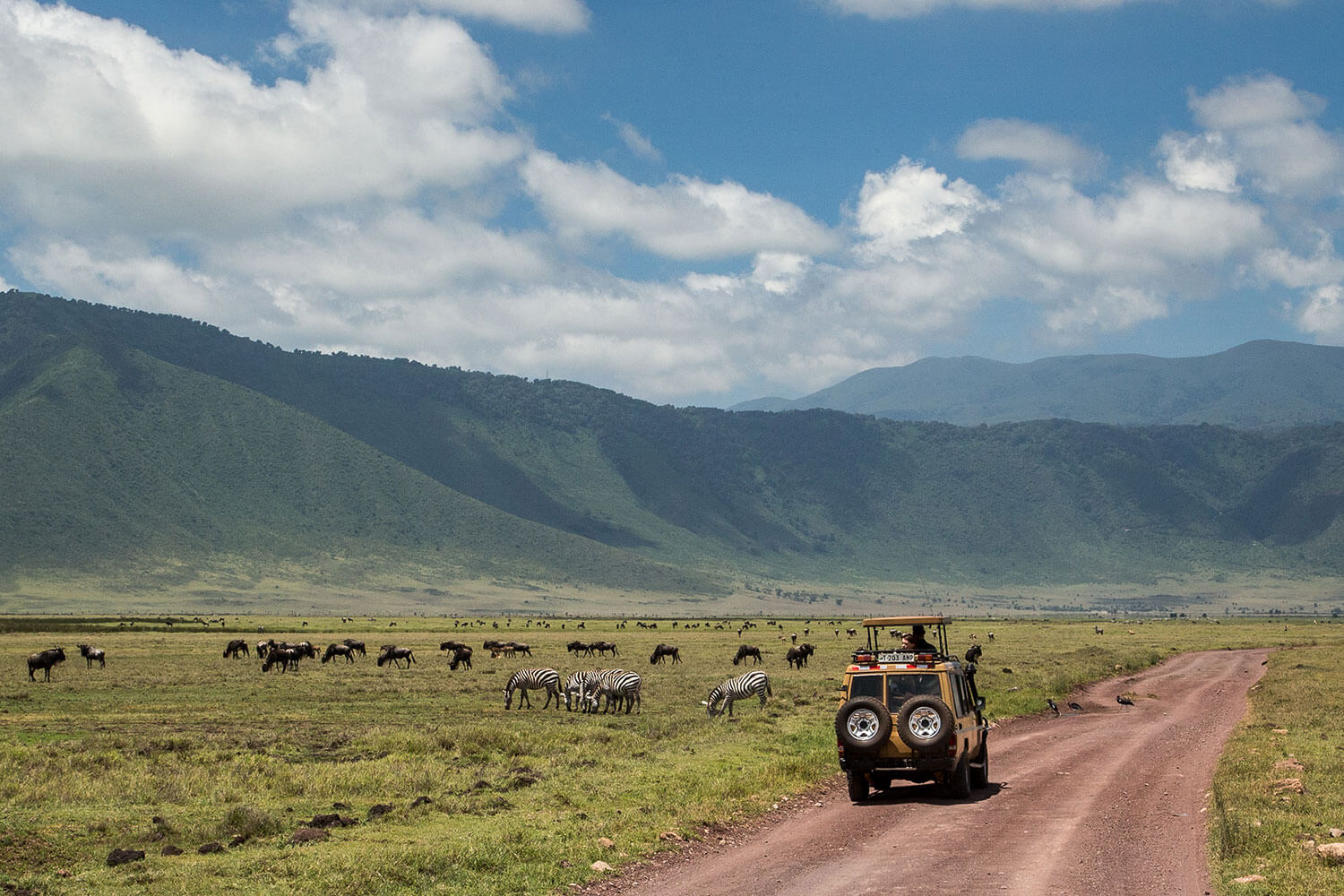
The greatest way to see wildlife in the Ngorongoro Crater is on a game drive. Game drives are conducted in a regular tour van in two shifts: the morning and afternoon. Because the animals do not migrate, wildlife watching at Ngorongoro is superb all year. The dry season, from December to March, as well as June to September, provides the best wildlife viewing opportunities in the Ngorongoro Conservation Area/Crater.
There is no rain during those months, and the crater is less muddy. The savanna grasses are shorter, making it easier to see wildlife. Animals concentrate at the few surviving waterholes during the dry season, allowing travellers to observe the majority of them in one location. Unfortunately, most tourists visit the crater during the dry season so Consider going during the rainy season to avoid the crowds and have a more intimate safari. During the rainy season, the entire country is lush and gorgeous. It’s also the ideal season for birdwatching.
Photographic Safari
Tanzania has to be one of the most photogenic countries on the earth. Tanzania is enjoying its newfound popularity as an extremely hot photography holiday destination, with snow-capped mountain peaks, “Big Five” safaris, and gorgeous tropical islands. A photographic safari in the Ngorongoro Crater should include not just animals but also birds, lakes, and savanna flora, as this location has it all. Maasai tribesmen that live around the crater may be willing to participate in your photography adventure.
Visiting the Maasai bomas
The Ngorongoro Crater in Tanzania is known around the world for its wildlife and as the home of the Maasai tribe- One of Africa’s most fascinating tribes. They are allowed to graze their animals around the crater rim or bring them down to the crater for water during the dry months of the year, despite the fact that they live outside the crater. Tourists can arrange to visit one of their homes or cultural centers while visiting the Ngorongoro Conservation Area to learn about their traditions and culture.
Take pleasure in Picnic Lunch.
Have you ever imagined having a lovely picnic meal in the African desert, surrounded by wildebeest? The Ngorongoro Conservation Area always provides what their visitors need by allowing them to participate in some of the special activities such as picnicking to ensure that their visitors have a good time and that their safari expectations are met; to be honest, the Ngorongoro safari will never let you down.
Picnic lunches can be provided by your tour operators or hotels, and you can make it even more delightful and memorable by sharing it with the local indigenous Maasai people in the crater. It is one of the most memorable moments and activities you can share with your loved one, whether it is your partner, family, friends, or relatives.
Walking safari
 ne of the few activities that allows you to get up close and personal with the African wilderness and its creatures without interfering with their everyday activities. An armed ranger will always accompany you on your walking safari to keep you comfortable and defend you from any predators, making your safari unique and enjoyable. Your walk along the crater rim will take you through stunning greenery, past colorful wild flowers, and lush trees unique to the Ngorongoro Highlands once you arrive at a scenic and lonely trailhead. The stroll is especially beneficial for montane forest birds, such as the olive sunbird, cinnamon-chested bee-eater, and European roller that we saw. You may also come across larger animals, such as giraffes, zebras, and elephants, as we did (which is why you are accompanied by an experienced guide and armed ranger at all times).
ne of the few activities that allows you to get up close and personal with the African wilderness and its creatures without interfering with their everyday activities. An armed ranger will always accompany you on your walking safari to keep you comfortable and defend you from any predators, making your safari unique and enjoyable. Your walk along the crater rim will take you through stunning greenery, past colorful wild flowers, and lush trees unique to the Ngorongoro Highlands once you arrive at a scenic and lonely trailhead. The stroll is especially beneficial for montane forest birds, such as the olive sunbird, cinnamon-chested bee-eater, and European roller that we saw. You may also come across larger animals, such as giraffes, zebras, and elephants, as we did (which is why you are accompanied by an experienced guide and armed ranger at all times).
Birdwatching
 The Ngorongoro crater is one of Tanzania’s top birding spots. With over 500 species documented, both the Ngorongoro highlands and the crater offer superb birding opportunities. The highland forest has a diverse and intriguing birdlife. The white-eyed slaty flycatcher and the Livingstone turaco are among the species to be observed. The crater is home to a variety of specialist grassland birds. Just know that, for bird lovers, the Ngorongoro crater is one of the best places to meet your birding expectations, and that you will never be disappointed because the region provides all you need to enjoy your birding experience.
The Ngorongoro crater is one of Tanzania’s top birding spots. With over 500 species documented, both the Ngorongoro highlands and the crater offer superb birding opportunities. The highland forest has a diverse and intriguing birdlife. The white-eyed slaty flycatcher and the Livingstone turaco are among the species to be observed. The crater is home to a variety of specialist grassland birds. Just know that, for bird lovers, the Ngorongoro crater is one of the best places to meet your birding expectations, and that you will never be disappointed because the region provides all you need to enjoy your birding experience.
Hot-air balloon safari
This is a pricey, yet thrilling way to explore the massive crater and its surroundings. During the migration, when the wildebeest are roaming or calving beyond the crater and the adjacent Serengeti, hot air ballooning is highly recommended. The beauty of hot air ballooning is that it allows people to appreciate and enjoy the scenic beauty of the crater.
Hiking safari
Not only does Ngorongoro include wildlife and a crater, but it also offers some amazing and gorgeous mountains to challenge yourself if you want to do some hiking during your safari in Tanzania. The hills are ideal for animal watching and cultural interactions with the Maasai herdsmen who live nearby. The famous Nasera Rock, located at the base of the Gol Mountains, is home to a variety of birds and hundreds of baboons. During the Stone Age, the Leakey family uncovered the bones of humans who lived there. If you want to visit the distant African wilderness, the Gol Mountains will pique your interest. After exploring the Gol Mountains, you have the option of climbing Oldoinyo Lengai, an active volcano.
Visit the Olduvai Gorge
 “The Cradle of Mankind” is the name given to the Olduvai Gorge. Richard Leakey and his family made the earliest archaeological finds there. In the early twentieth century, the Leakeys uncovered the remains of the first hominids in Olduvai Gorge. They went on to make some significant findings, the majority of which date back more than 2 million years. Extinct creatures that roamed the area, as well as more recent stone-age man, are among the fossils. Don’t forget to look for hominid footprints in Laetoli. These footprints, which date back over 3 million years, were discovered on a volcanic rock. A small museum was established for public viewing and contains excavated skeletons and other artifacts.
“The Cradle of Mankind” is the name given to the Olduvai Gorge. Richard Leakey and his family made the earliest archaeological finds there. In the early twentieth century, the Leakeys uncovered the remains of the first hominids in Olduvai Gorge. They went on to make some significant findings, the majority of which date back more than 2 million years. Extinct creatures that roamed the area, as well as more recent stone-age man, are among the fossils. Don’t forget to look for hominid footprints in Laetoli. These footprints, which date back over 3 million years, were discovered on a volcanic rock. A small museum was established for public viewing and contains excavated skeletons and other artifacts.
Visit Lake Magadi.
The tiny lake Magadi will not disappoint if you are intrigued by stunning scenery, wildlife, and birds. Thousands of wading birds, such as pelicans and flamingos flock to this oasis. Lake Magadi is one of Tanzania’s greatest birding destinations. Thousands of people flock to Tanzania each year to see flamingos foraging for green algae in this alkaline lake.
Visit the Empakai Crater.
This is the Ngorongoro Crater’s younger sibling. A volcano collapsed into a 6-kilometer-wide crater to create the Empakai Crater. It’s a lesser-known crater with a lot of potential. A large portion of it is submerged by an 85-meter-deep alkaline lake. Because of the abundance of algae, the lake changes color depending on the time of day and attracts thousands of flamingos. Pink flamingos, blue monkeys, water bucks, bush bucks, buffaloes, elephants, and hyenas live on the crater’s edges. From outside this crater, Mount Kilimanjaro and Ol Doniyo Lengai may be seen.
ACCOMMODATIONS IN THE NGORONGORO CONSERVATIONAL AREA
The Ngorongoro Conservation area offers a wide range of lodging options, each with its own unique features and luxuries. There are a few lodges on the rim of the Crater that offer amazing views of the crater, but the options are limited and usually cost more. However, if you can pay the costs, the opulence of the lodges is well worth it.
If you’re willing to forego the crater’s views, the accommodations cost tend to drop as you get further away from the rim of the crater. For the start of your safari, you can choose from a variety of hotels near the Ngorongoro Crater or further out in the Ngorongoro Conservation Area. Aside from the lodges, the Ngorongoro conservation area includes some of the most gorgeous campsites, ranging from private to public, where you can stay throughout your Ngorongoro safari adventure. Some of the Accommodations in the Ngorongoro Conservation Area include
Ngorongoro Crater Lodge
 Without a doubt, one of the world’s top hotels and probably best accommodation in the Ngorongoro conservational area. People come to Tanzania just to stay here, perched on the rim of the Ngorongoro Crater with breath-taking vistas. This is Andbeyond flagship property; unique and unlike any other property on a northern route. Andbeyond describes it as “Masaai meets Versailles,” but we think it’s a little too much – but if you can afford it, you must stay here!
Without a doubt, one of the world’s top hotels and probably best accommodation in the Ngorongoro conservational area. People come to Tanzania just to stay here, perched on the rim of the Ngorongoro Crater with breath-taking vistas. This is Andbeyond flagship property; unique and unlike any other property on a northern route. Andbeyond describes it as “Masaai meets Versailles,” but we think it’s a little too much – but if you can afford it, you must stay here!
The highlands camp
Eight dome tents were created and gently set on the slopes of the Olmoti volcano, taking full use of the breathtakingly enormous views. They were inspired by the shape of traditional Maasai homes (called bomas). The dome apartments not only provide a unique and fascinating vacation, but their position also makes them an ideal base for exploring the Ngorongoro highlands’ wild and pristine areas.
The camp features eight “dome suites” that are separated by the undergrowth. The domes are mostly canvas, with a big curved Perspex ‘window’ facing out over amazing views. They each have their own en-suite bathroom with a contemporary decor, hot water, showers, and flushing toilets. The mattresses are king-sized, and there are wood-burning stoves available for use on chilly evenings to add to the comfort and coziness.
Entamanu Camp
 The camp is located on the isolated North Western edge of the Ngorongoro Crater, off the usual path yet right on the rim, with spectacular views down into the Crater from one side (sunrise) and out over the Serengeti from the other (perfect for sundowners). This is the Crater’s wild side, where the exclusivity and views are unrivaled.
The camp is located on the isolated North Western edge of the Ngorongoro Crater, off the usual path yet right on the rim, with spectacular views down into the Crater from one side (sunrise) and out over the Serengeti from the other (perfect for sundowners). This is the Crater’s wild side, where the exclusivity and views are unrivaled.
Kirurumu Ngorongoro
Kirurumu Ngorongoro is a beautiful tented camp on the rim of the Ngorongoro Crater, with breathtaking views. It’s a small, safari-style camp, a far cry from the enormous, faceless chains that can also be found on the rim.
Lemala Ngorongoro Camp
 Lemala is nicely situated (though don’t be misled, the views are not into the Crater itself, since the camp is on the other side of the rim, facing out into the Conservation area rather than into the Crater itself) and has some wildlife in the vicinity. With its wonderful original tents and general rustic luxury, it’s a great product and a refreshing breath of fresh air surrounding the Ngorongoro rim.
Lemala is nicely situated (though don’t be misled, the views are not into the Crater itself, since the camp is on the other side of the rim, facing out into the Conservation area rather than into the Crater itself) and has some wildlife in the vicinity. With its wonderful original tents and general rustic luxury, it’s a great product and a refreshing breath of fresh air surrounding the Ngorongoro rim.
Ngorongoro Serena Lodge
 Because there are few options on the crater rim, the Ngorongoro Serena Lodge is an ideal alternative; it provides easy access to the crater while being reasonably priced. Because it is a large hotel, it lacks the charm that one would anticipate from a lodge in a world-famous area. This is a good choice for the rim, but if you’re seeking for someplace with a little more charm and a little less money, Plantation Lodge in the highlands is a good option. The Ngorongoro Crater Lodge is another option if you want to stay in one of Africa’s most sought.
Because there are few options on the crater rim, the Ngorongoro Serena Lodge is an ideal alternative; it provides easy access to the crater while being reasonably priced. Because it is a large hotel, it lacks the charm that one would anticipate from a lodge in a world-famous area. This is a good choice for the rim, but if you’re seeking for someplace with a little more charm and a little less money, Plantation Lodge in the highlands is a good option. The Ngorongoro Crater Lodge is another option if you want to stay in one of Africa’s most sought.
Ngorongoro Sopa
If we had to choose between staying on the rim or in the Ngorongoro Highlands, we would probably choose the Ngorongoro Sopa for people who couldn’t afford to stay at the Crater Lodge. The Sopa, which is located on the eastern side of the rim and isn’t particularly luxurious, does benefit from having its own access road. As the number of lodges surrounding the crater has grown over time, entrance from the western side (Serena/Crater Lodge side) has become increasingly difficult.
HOW TO GET TO NGORONGORO CONSERVATIONAL AREA
 Flying into Kilimanjaro International Airport (JRO), which is roughly 46km from Arusha town, the primary access point to Ngorongoro and other Tanzanian northern safari parks like the Serengeti, is the best way to get to Ngorongoro. You can also fly into Dar es Salaam’s Julius Nyerere International Airport (DAR) and then to Arusha Airport or Kilimanjaro International Airport. The route from Arusha to the Ngorongoro Conservation Area is good and paved, and it enters the park through the Loduare Gate, which is the major entrance and exit gate for the park near Karatu.
Flying into Kilimanjaro International Airport (JRO), which is roughly 46km from Arusha town, the primary access point to Ngorongoro and other Tanzanian northern safari parks like the Serengeti, is the best way to get to Ngorongoro. You can also fly into Dar es Salaam’s Julius Nyerere International Airport (DAR) and then to Arusha Airport or Kilimanjaro International Airport. The route from Arusha to the Ngorongoro Conservation Area is good and paved, and it enters the park through the Loduare Gate, which is the major entrance and exit gate for the park near Karatu.
Another popular entry point of Ngorongoro is through Naabi Hill Gate, which is located west of Serengeti National Park. Flying a charter plane to the Ngorongoro Conservation Area is also an option since on the crater rim near the Ngorongoro Conservation Area headquarters, there is an airstrip.
WHEN IS THE BEST TIME TO VISIT THE NGORONGORO CONSERVATION AREA?
During the dry late June to September peak season, as well as the December to February calving season that follows the November rains, expect high visitor numbers as at this time animal viewing is more rewarding and other tourism activities are well done. The rainy season, which runs from April to May, is typically regarded as the best time to visit the Ngorongoro Crater is you want to avoid crowd/ congestions, as there are significantly fewer visitors and the crater is lush and green in comparison to the dusty dry-season terrain.








